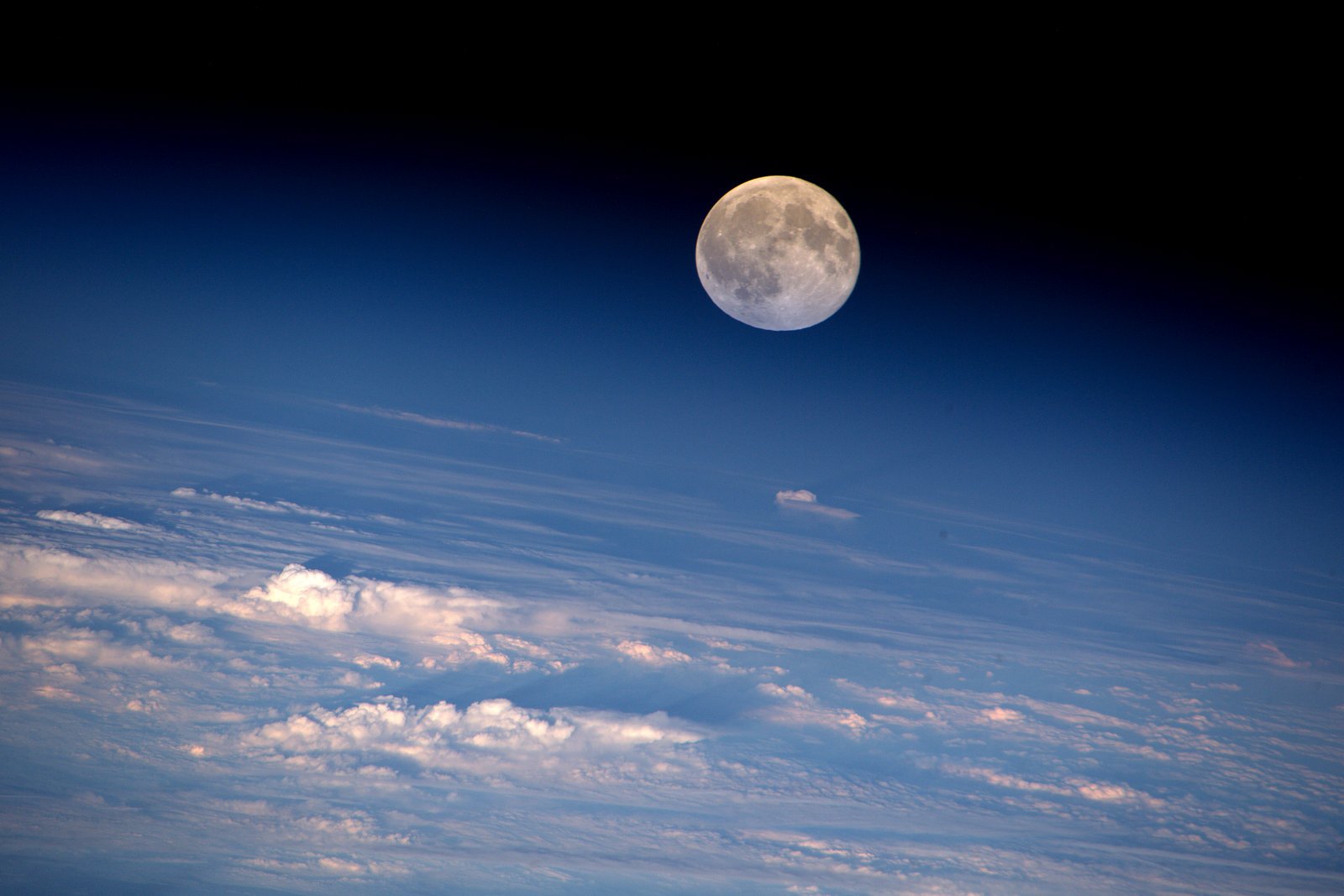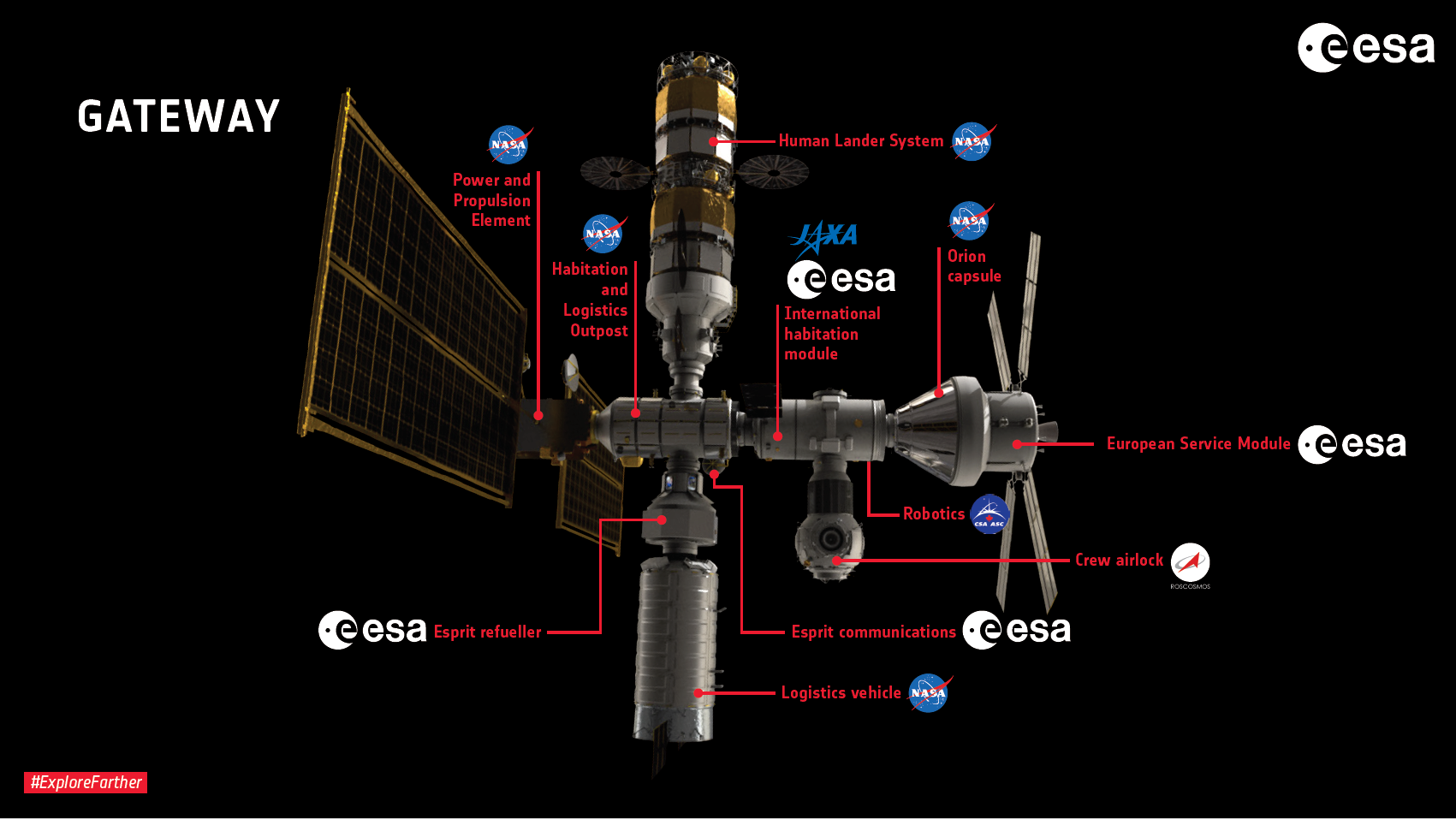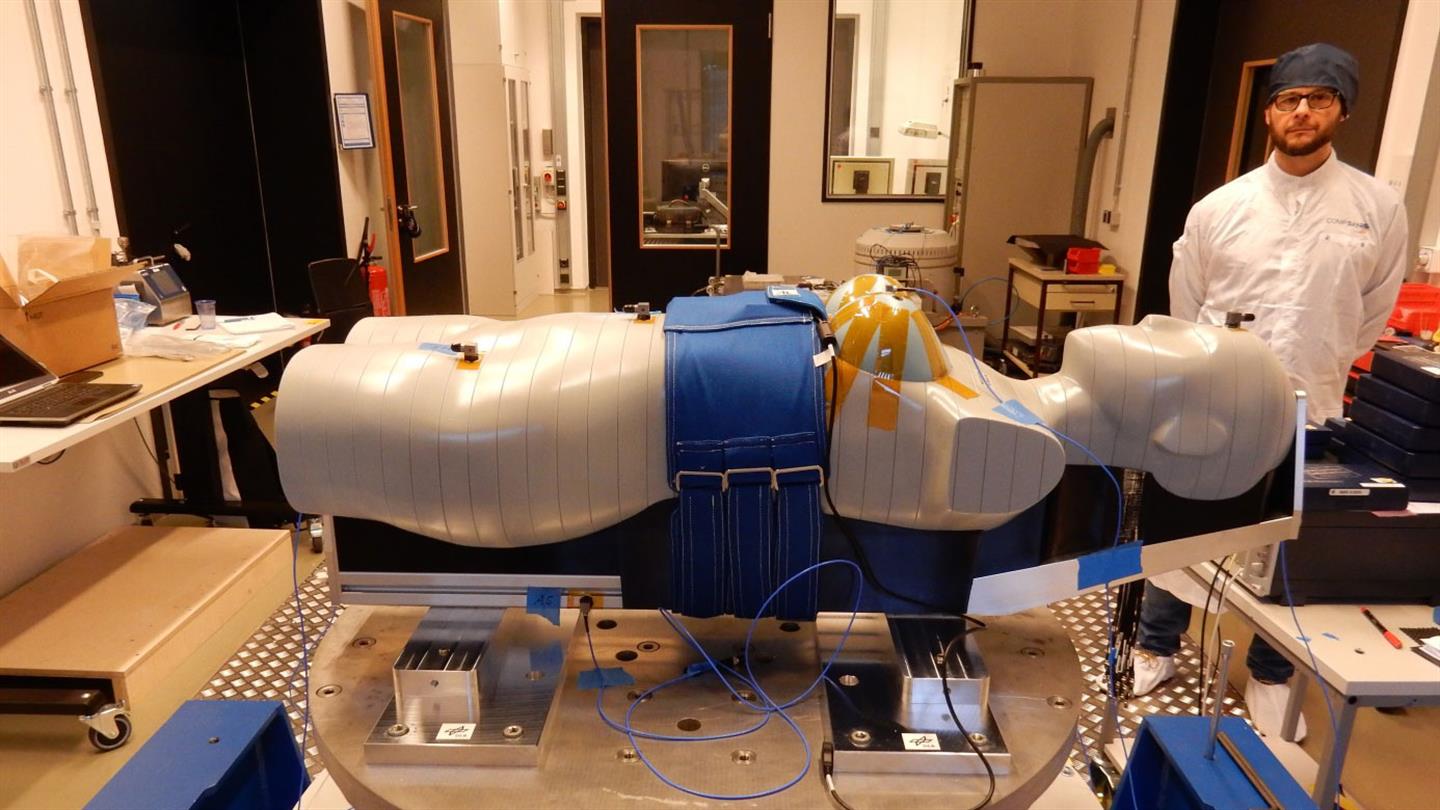The Internal Dosimeter Array or IDA will measure radiation levels within the Gateway coming from a range of sources including our Sun in the form of intense storms of ‘solar energetic particles’ and galactic cosmic radiation, thought to originate from supernovas.
Measurements from IDA will complement external space radiation data to enable safer and more sustainable deep space exploration.
Risky business
Radiation poses a major health risk to people in space. Astronauts on the International Space Station receive doses roughly 120 times higher than on Earth. Away from Earth’s protective magnetic field and into interplanetary space, the impact on the human body could be much higher: on a one year mission to Mars, astronauts receive roughly 250 time more radiation than a person on Earth.
As the first elements of the Gateway fly to position in a halo orbit around the Moon, they will pass through the Van Allen radiation belts. These are areas around Earth where energetic charged particles that are particularly harmful to humans are trapped by our planet’s magnetic field.
Once in position, the Gateway will orbit the Moon flying as close as 3000 km from the lunar surface and at its furthest, 70 000 km.
The Gateway will spend around a week per month inside the Earth’s magnetosphere, providing a unique opportunity to observe the deep magneto-tail and near lunar plasma environment. For the other three weeks per month, the Gateway will be located outside of the Earth’s magnetosphere, providing an ideal location for investigating the deep space environment, undisturbed solar wind and the associated radiation environment. In this period, it will be possible to measure not only the particle radiation stemming from the Solar activity, but also the low energy spectrum of cosmic radiation.
Although the levels of radiation in space fluctuate, the overall risks to human health are significant. Electronics are not immune to radiation damage, either. Radiation-resilient materials are needed to ensure equipment function properly and do their work to keep astronauts safe.
Mapping out radiation
Like all elements of the Gateway, IDA is an international collaborative payload, in this case between ESA and the Japanese space agency JAXA. The array will be located inside the NASA-commissioned Habitation and Logistics Outpost or HALO module of the Gateway from where it will continuously monitor radiation levels.
From within the Gateway, IDA will be instrumental in evaluating how well the outpost shields from radiation and the degree to which protons, neutrons and other particles are ejected as radiation hits and passes through the spacecraft structure, a process known as spallation.
Furthermore, radiation measurements will be cross-referenced with those taken by the European Radiation Sensors Array, or ERSA, that will be mounted on the outside of the lunar outpost. The two payloads share similar instruments, which will allow for a more comprehensive overview of the radiation environment in lunar orbit. ERSA in particular will enable researchers to more accurately forecast radiation events.
Meanwhile, data from IDA will allow the scientific community to assess crew health and hardware performance given the radiation levels inside and around the Gateway. Findings will help build better spacecraft and protection for astronauts on and around the Moon, as well as other deep space environments such as Mars.
The road ahead
IDA is funded by ESA’s human spaceflight and robotic exploration programme that prioritises the radiation studies that will enable deep space missions and joins the list of extensive radiation research that is already paving a safer way forward to exploring the Moon, Mars and beyond.
Experiments on the International Space Station such as the Dosis-3D active and passive radiation detectors are currently used to map radiation in the Columbus module.
Dummies outfitted with over 5000 radiation sensors will be the sole passengers on the first Orion test flight to the Moon to measure radiation exposure to future crew.
These efforts take place alongside ESA’s Space Safety programme that works to mitigate and prevent the effects of hazards from space. As part of this, the Space Weather Office keeps constant watch over our Sun, providing support, predictions and up-to-date information on current conditions including solar activity and the radiation environment at Low-Earth orbit. Forecasts are also provided to help in the scheduling of extravehicular activity.






